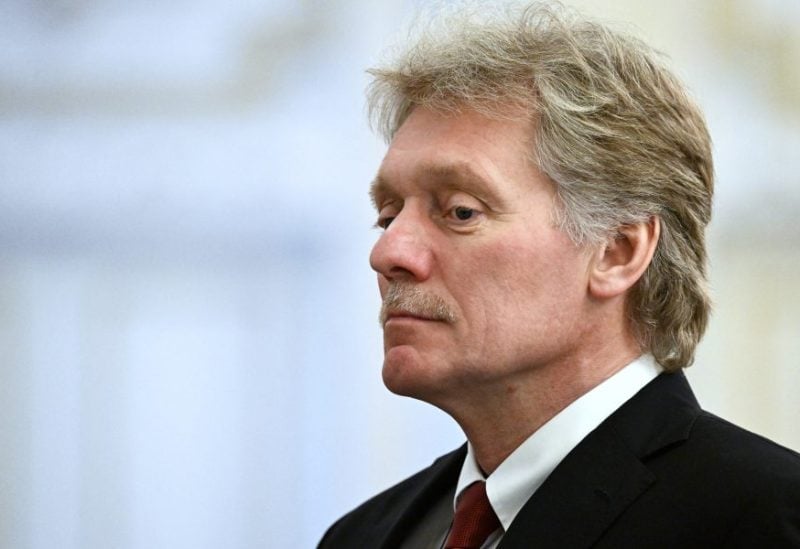
Kremlin spokesman Dmitry Peskov attends official welcoming ceremony for Russian President Vladimir Putin in Astana, Kazakhstan November 9, 2023. Sputnik/Pavel Bednyakov/Pool via REUTERS
The Kremlin warned the West on Friday that it had a list of assets in the United States, Europe, and elsewhere that would be seized if G7 leaders decided to confiscate $300 billion in frozen Russian central bank reserves.
Leaders of the Group of Seven major industrialised nations will meet in February to discuss a new legal theory that would allow the seizure of frozen Russian assets, according to two sources familiar with the plans and a British official.
Kremlin spokesman Dmitry Peskov said any such move by the West would amount to “theft”, violate international law and undermine reserve currencies, the global financial system and the world economy.
“It will be a significant blow to the main parameters of the international economy, it will undermine the international economy,” Peskov told reporters.
“It will undermine the confidence of other countries in the United States as well as in the EU as economic guarantors. Therefore, such actions are fraught with very, very serious consequences.”
When asked if there was a specific list of Western assets that Russia could seize in retaliation, Peskov said: “Yes. There is.”
He declined to say which specific assets were on the list.
After President Vladimir Putin sent troops into Ukraine in 2022, the United States and its allies prohibited transactions with Russia’s central bank and finance ministry, blocking around $300 billion of sovereign Russian assets in the West.
U.S. and UK officials have worked in recent months to jumpstart efforts to confiscate Russian assets immobilised in Belgium and other European cities, and hope G7 leaders agree to issue a stronger statement when they meet in late February, around the second anniversary of Moscow’s invasion of Ukraine, three sources told Reuters.
The legality of confiscating Russian sovereign assets is not clear cut – and Russia has repeatedly said it would contest any seizures in the courts.
Supporters of seizing Russian assets say that the war in Ukraine is an illegal war and that the frozen Russian money should be given to Ukraine either for reconstruction or even to fight Russian forces.
Russian officials, though, say that the West has fought several wars of doubtful legality including the 2003-2011 U.S.-led war in Iraq – and some lawyers have questioned if confiscation is even legal in international law.
No decisions had been made, and several countries – including the United States and Britain – would require legislative changes to establish the needed authorities to carry out such seizures, sources told Reuters.
Russia has reduced holdings of U.S. Treasuries since 2014 and some in the United States have warned that confiscating Russian assets could prompt other major powers – including China – to shun U.S. and European currencies and government bonds.
Though the Russian central bank has not detailed exactly which assets have been frozen, most of the bonds and deposits are denominated in euros as well as some in U.S. dollars and British pounds, according to publicly available data detailing holdings at the start of 2022.
Some Russian officials have suggested that if Russian assets are confiscated then foreign investors’ assets stuck in special so-called type “C” accounts in Russia could face the same fate. Some foreign assets were effectively locked in the C accounts.
It is not clear exactly how much money is in these accounts but Russian officials have said it is comparable to the $300 billion of frozen Russian reserves.
Finance Minister Anton Siluanov said last week that there were significant funds in the C accounts. Russia’s central bank declined to comment.